Executive Summary
For the advisor leading a virtual team, the day-to-day can offer a rewarding blend of flexibility, creativity, and productivity; at the same time, though, many of the benefits of remote work can also make it challenging to build a tight-knit team culture. For example, with flexibility comes fewer synchronous interactions, which in turn can result in less innovation, team bonding, and collaboration. While these criteria are not crucial to running a viable business, the reality is that they are still important factors in establishing a flourishing business, and face-to-face time in some form or another can be invaluable for building a strong, aligned team. This isn't to say that founders should throw in the virtual towel and try to convince their team members to move to their "headquarters" (assuming there is, in fact, a brick-and-mortar building for team members to even go to); instead, holding an in-person team retreat once or twice a year can be a powerful way to bring the team together… without having to commit to an in-person office in the long term.
In this article, Kitces Managing Editor Sydney Squires shares how the fully virtual Kitces team constructs its biannual team retreats – and how other leaders of virtual teams can also plan and execute a retreat of their own.
As a starting point, to get the most out of a team retreat, it's important to focus on 1 key theme driving the feeling that team members should leave with at the end of the retreat. This can be curated by assessing present team needs (which means the theme will likely change from retreat to retreat). For example, while a seasoned team who has just finished a busy tax season may need a retreat that leaves them feeling "recharged", a more recently formed team full of new hires may benefit more from feeling "aligned" with each other and with the company's vision. Starting with a theme is essential because it acts as a filter through which all other decisions can be made, from the type of venue that's selected to the different activities planned out.
Whatever theme is selected as the focal point of the retreat, 4 key takeaways can further drive home the main idea: (Re-)Setting The Vision (where company leaders share the past, present, and future vision of the company); Learn Yourself, Learn Your Team (where team members learn about each other and how to work together more cohesively); Connect With Who You Serve (where team members meet with those whom they work with closely, ranging from clients to contractors to Centers Of Influence); and, perhaps most importantly, Be Humans Together (where everyone can enjoy their face-to-face time and bond as a team).
While a great deal of work is involved in the logistical planning of organizing a retreat (e.g., determining dates, selecting a location, finding a venue, purchasing flights, and all of the other 'little' things required to get a virtual team into the same place at the same time), a good checklist – like the downloadable template we provide – can be instrumental in helping leaders ensure that all arrangements are optimally organized. Generally speaking, beginning the retreat planning process at least 4 months before the retreat date usually provides for enough time to work through all of the logistical details and offers enough advance notice to team members – though the time may vary depending on the retreat activities and the level of the retreat organizers' event planning experience.
Ultimately, the key point is that an in-person retreat can be a powerful tool to help a virtual team get many of the benefits of face-to-face collaboration without requiring the team to be physically together all the time. Additionally, with a cohesive theme guiding the agenda and a comprehensive checklist of logistical tasks, a team leader can delegate many of the organizational responsibilities that will contribute to a memorable and productive retreat!
For many financial advisors starting their own firms, the early years are often spent on their own with only a small ring of service contractors to support them. But as their client base and revenue grow, their capacity shrinks with many advisors eventually reaching a point where they no longer have the time to bring on new clients while maintaining their existing relationships. In other words, they can no longer grow the firm as solo advisors. This crossroad typically strikes between 30–40 clients or $220,000–$320,000 in revenue; from there, advisors often need to seek full-time support.
Especially in a post-pandemic world, where clients have become accustomed to meeting remotely, advisors can more easily find the support they need in full-time employees based anywhere. This can be a relatively simple solution to finding high-quality talent when seeking only 1 or 2 team members, but as an advisor's team grows and they find that their team is scattered geographically, they often find themselves facing different issues than they did in their solo days. This is particularly the case around establishing and building a tight-knit team culture, as the distinction between a group of people who simply work together versus a collaborative team is subtle but important.
Creating a level of connection between team members in a digital work environment can be a daunting task and has resulted in a dearth of articles praising same-time, same-place work styles for fostering collaboration, building team culture, sparking innovation, and fostering professional development (especially for new hires). And while many of these advantages certainly do exist (and can take extra effort to implement across a team of fully remote workers), it is not to say that building a digital team and work culture isn't a worthwhile endeavor. Yet asking an entire (remote) team to relocate to 1 set location would be impractical and risk damaging attrition outcomes, along with not being what the owner themselves likely wants.
Thankfully, there are other options. For the advisor looking to foster real-time connection with their team without sacrificing the day-to-day virtual environment, an in-person retreat can be a great middle ground.
What Does An In-Person Retreat Look Like For A Virtual Team?
For the Kitces team, spending 2-and-a-half days together, twice a year, has been invaluable for fostering team connections and culture. These semi-annual retreats allow us to get the most of the flexibility of remote work while also fostering in-person connection across the team.
For the majority of our retreats, the team will arrive at the designated retreat location on a Sunday night and then depart the following Wednesday morning (though as the team has grown, we've designated Sunday as an additional "Management Day" for directors and leadership, who arrive 1 day before the rest of the team on Saturday evening, to meet and collaborate together).
Our retreats are planned around 1 central feeling that we want everyone on the team to leave with – "connected," "motivated," "rejuvenated," or something similar. This theme influences all of the retreat planning decisions and acts as the core metric of success: If team members leave with this feeling, we did something right!
Deciding On A Theme
Determining the theme generally comes down to the needs of the team. While fostering connection will likely be an ongoing need, other needs of the team and business will likely change continually year over year such that adjusting the theme from 1 retreat to the next can be a good way to address those changing needs.
While many factors can weigh into selecting the retreat theme, it can be helpful to start by considering the tenure of the team. Advisors often make their first 2 full-time hires within a fairly close span of each other. Perhaps for a relatively new team, then, "aligned" or "engaged" could be a great starting theme. A retreat with this as a theme would lean heavily into understanding the company's history, values, and objectives (or brainstorming the values, depending on the tenure of the company) and where the company can grow, creating an aspirational vision to motivate employees during the year.
The second factor to consider is overall morale. If a retreat is scheduled shortly after a busy tax season, a set of surge meetings, or another intensive, all-hands-on-deck period, "recharged" could be a strong thematic candidate. A retreat focused on recharging its team members could involve some nice R&R, of course, but also discussions with team members around sustainable work practices and motivation – What lights them up? What wears them down? Alternatively, such a retreat may involve taking time to debrief the last intense stretch, highlight recent wins, celebrate, and discuss learning opportunities.
Lastly, it's crucial to consider what problems the team is facing. In remote work environments, it can take considerable planning and effort to foster conversations around work issues and ensure everyone's voice is heard when determining which pieces of work culture need to change and how. As an example, for the Kitces team, we realized that we were having issues with giving and receiving feedback in a timely manner in a virtual environment for all the reasons one might imagine: issues with asynchronous interaction, tone, delivery, and hearing the intention behind the feedback.
So, we set a theme of "connection" for our June 2023 retreat in Minneapolis to discuss how to best give and receive feedback. This shaped the content of our sessions heavily – we organized internal presentations and discussions on feedback, brought in an expert to discuss the physiological responses to feedback, had several roleplay sessions, and collectively set company norms around how we wanted to give and receive feedback.
Whatever the theme, it doesn't have to be explicit in the communications to team members (though it can be) – the most crucial point of this is that leaders understand explicitly what they're preparing for.
Driving The Theme Home Through Takeaways
Once the theme was set for our June 2023 retreat, we structured the retreat to ensure that team members internalized the theme. This was done by identifying 4 takeaways that would each support the central theme:
- (Re-)Setting The Vision
- Learn Yourself, Learn Your Team
- Connect With Who You Serve
- Be Humans Together
These takeaways served as a crucial filter for retreat planning decisions; if an activity didn't fit into 1 of these 4 things, then it wasn't deemed to be the best way to reinforce the theme during our in-person time together.
(Re-)Set The Vision
Retreats offer a powerful opportunity to share the vision and core values of the company with the team, which is a particularly beneficial practice when there are a lot of new faces or if the makeup of the team has shifted. For rapidly growing small firms, there can be new people joining the firm who benefit from understanding how their work aligns with the company's vision. This also applies to other team members who have grown with the company and taken on new responsibilities.
For new employees, most of the information about the company's vision will be new. For employees with more tenure, though, there will be some repetition, or a team leader may use the opportunity to 'reset' the vision and ensure that everyone understands and is aligned with the company's updated goals for future growth.
Vision-setting sessions may include:
- Sharing the history of the company (where did it come from?)
- How the company reached the stage where it is now
- How success is currently being measured
- Future goals and priorities
- What the company may look like in 3, 5, and 10 years (how many people? What will everyone be doing?)
- Ask Me Anything Sessions (as the team has grown, we like to use Slido to facilitate these questions)
Learn Yourself, Learn Your Team
If "(Re-)Setting The Vision" offers team members a chance to learn (or refresh their memory) about the history of the company and culture, then "Learn Yourself, Learn Your Team" offers them a chance to learn about the humans they work with and evaluate not just who everyone is, but also how this combination of people works together.
Learn Yourself, Learn Your Team can be particularly powerful when paired with assessment tools – preferably those that are already a part of the workplace and team culture. These tools can be a starting board to facilitate conversations about who people are, how they show up, and how they are similar to (or different from) their team.
For example, the Kitces team uses Kolbe scores (among other tools) in their workplace assessments to understand how people like to show up. I found this to be one of the greatest conversation facilitators for our retreats because it gave everyone a shared springboard to reflect on not just their strengths and weaknesses, but also how they fit into the team overall.
Kolbe Overview
The Kolbe is an overview of people's natural methods of operation by scoring them across 4 different "Action Modes": Fact Finder, Follow Thru, Quick Start, and Implementor. A person's combined scores across all 4 Action Modes give insight into how they instinctively take action. Participants are given a score of 1–10 in each category. A score of 1–3 is considered "short" in a category, 4–6 "moderate", and 7–10 "long" (notably, Kolbe uses the terms "short" and "long" rather than "low" and "high", to avoid moralizing people's different working habits. All scores are good scores!).
In short, the 4 "Action Modes" are categorized as follows:
- Fact Finder (red): how employees gather and share information. People who are 'long' in the Fact Finder action mode (i.e., with a score of 7–10) need to gather all the facts and details before making a decision. Whereas those who are short (1–3) would favor overviews, bullet points, and summaries. (For those who have ever received an 8-paragraph email from me explaining too many details and asking too many questions: I'm sorry, and you can probably guess what my fact finder score is!)
- Follow Thru (blue): how employees organize and design workloads. Employees who are long in Follow Thru heavily favor processes and procedures. Someone shorter in their Follow Thru may tend to resist organization and make things up as they go.
- Quick Start (green): how employees deal with risk and uncertainty. Being long in Quick Start can be synonymous with risk-taking and impulse – these are people who often love to experiment and iterate. Those who are low in Quick Start often want to manage the risk, rather than diving into new things all the time.
- Implementor (yellow): how employees handle space and tangibles. Long Implementors tend to be builders – either in the literal sense, with hard materials, or by creating tangible deliverables and solutions. Those who are short Implementors tend to favor thinking abstractly, but may not need (or want) the concrete deliverable to be able to envision things.
As an example, my Kolbe Score results are shown below.
Using Kolbe Scores In A Retreat Setting
Before arriving at the retreat, I took the Kolbe and spent some time reading about what the various Kolbe scores mean (as a long Fact Finder, I probably spent too long reading and thinking about this. Engage at your own risk, depending on your score). At the retreat, we engaged a facilitator trained in using Kolbe for hiring and team-building to give context for these scores and ensured that the team understood the definitions before having us break out into smaller roundtable groups to discuss the Kolbe scores within our individual departments. (Notably, our group found it helpful to have the facilitator rotate and answer questions among our multiple tables and teams. For smaller groups – e.g., 4–5 total full-time employees – it may be more effective to have the facilitator sit in on the discussion.)
I found it particularly helpful to consider everyone's team scores in the aggregate:
We spent about 15 minutes discussing each of our scores – what resonated with us, if there were any scores we disagreed with or found surprising, and how these Kolbe scores manifested in our day-to-day work.
For example, I shared that in my current role as Managing Editor, I have to be process-oriented enough to create plans and processes that the team can iterate on, not just for the week in advance, but in the long-term (leveraging my moderate Follow Thru score). At the same time, new issues and opportunities constantly come up in our quest to create the best content for financial advicers, so I have to both do due diligence to manage these problems (relying on my long Fact Finder score) and pivot us to adapt accordingly (moderate Quick Start).
Another team member highlighted how their long Implementor score tied in with how they often construct new graphic formats, templates, and more concrete takeaways than other team members may have built on their own.
After discussing how our scores manifested individually, we reflected on the team's aggregate scores. On the one hand, given the depth of Nerd's Eye View content, it's not surprising that we are each very long in Fact Finder – and it's probably a crucial part of ensuring that we produce great content for our readers. On the other hand, Fact Finders, unchecked, can also spend too long deliberating and gathering information, and too little jumping into action.
Similarly, long Follow Thru scores made for easy weekly planning and ensured that everyone was procedure-oriented to ensure that our content met our standards – but did our preferences for process (indicated in our Follow Thru scores), combined with our overall tendency to think about risks before diving into a new activity (short Quick Starts), mean that we chose to stay in our comfort zones over trying out new things? Did we spend too long gathering data on whether or not something would work and too little time acting? How could we use the Quick Start and Implementor outliers on our team to help us be more well-rounded?
We finished with a more concrete discussion about how we could make meetings more effective. As a result of the discussion, I changed a few things in how I led the team:
- Because so many team members scored short on Quick Start, I tried to minimize impromptu brainstorming discussions. Instead of asking everyone to respond on their feet to new information (which often earned me a lot of blank stares), I aimed to share as much information as possible at least 24 hours in advance to give team members time to reflect and come as their best selves.
- Because many team members are long Fact Finders, I decided to give more nudges to set things down and keep things moving. We have a team naturally inclined to make sure they're a little more certain about things and to keep researching and reworking things. I realized what my team felt was 'good enough' often went above and beyond expectations.
- Because of our medium-to-long Follow Thru scores, I aimed to be more mindful of how we were building our processes. A common weakness of Follow Thru is that they tend to add too many steps to a process.
(A quick aside – as a manager, I found it helpful to hold this discussion twice: once with other managers and company leadership, and once with the team I managed. Depending on the size of the firm, this sort of multi-layered discussion may not be necessary, but it's worth considering!)
Connect With Who You Serve
As teams grow, a second issue may arise: not all team members may be familiar with the financial planning space and the unique needs that clients have.
At Kitces, for example, many newer team members are learning about the financial advice industry for the first time, alongside their standard tasks and company procedures (including yours-truly, who worked in children's publishing before joining Kitces!). While many team roles don't rely on having financial planning experience, making good strategic decisions often eventually comes back to an understanding of what differentiates our audience. When it came to making those decisions or adding the little details that just signal we get our audience, there was often a knowledge gap for new employees. And this gap was only widened by the nature of remote work and digital media, which can have less direct feedback loops and opportunities for staff to connect with the audience we serve.
Advicer Panels
While we certainly strive to create better feedback loops and education on the financial advice industry to help team members with their day-to-day responsibilities, we've found that one of our most valuable uses of retreat time is to bring in local members of our advicer audience, who are the people who actually use our offerings, for some Q&A. For the Kitces team, these are 'Advicer Panels' – reflecting our particular niche.
We usually hold about an hour of Q&A, first leading out with some set questions from Michael, opening it up to other team members, and finishing by taking the Advicers to lunch with the whole team.
The open questions truly vary – from newer members of the team trying to understand a particular corner of the advisory space to providing a safe place to ask what panelists would think about new offerings.
Connect With Who You Serve: For Advisory Firms
These advicer panels have been invaluable for the Kitces team to get more connected with who we serve and better understand our (digital) community. Likewise, members of a financial advisory firm may benefit from gaining a deeper understanding of how the work they do connects back to the entire network of people connected to and served by the firm. And because these networks can run wide and deep, considering the unique challenges of their team can help leaders design a retreat that addresses what is most needed by their team members.
In determining what to include in a retreat agenda to help team members connect with who they serve, consider the following questions that new team members may have:
- Who are we?
- How do we differentiate ourselves from others to the clients we serve?
- How can we better connect with those we have professional relationships with?
- What actually moves the needle for our core audience?
While the Kitces team has focused on highly engaged members, leaders may elect to invite local clients, Centers Of Influence, consultants, or subject matter experts who have worked with the team closely. Events with clients can range from more formal training sessions to social mixers, appreciation dinners, or dinners with a show.
Alternatively, if leaders prefer to use this time for more professional development, they may elect to host Q&As with Centers Of Influence (or others), talking about their areas of specialty and how they like to work with financial advisors.
The only limit in Connecting With Who You Serve is one's imagination. Regardless of who is brought in and what the event itself looks like, it's always nice to give a token of appreciation – on top of lunch, some sort of swag, flowers, or a small gift to thank the people involved for their time can go a long way!
Be Humans Together
The final, but perhaps most crucial takeaway an in-person retreat can offer a virtual team is the chance to just be people together. Remote work teams bring great benefits: increased flexibility, more autonomy over time, and much more. However, it can also make connection more difficult – ebbing into what I refer to as "Work Only Work Calls", where team members miss the water-cooler talk and other details that are only visible when they're in person together, especially when it comes to getting to know team members in different departments.
So, in the 2-and-a-half days that the Kitces team spends on retreat, we try to include a variety of ways for us to enjoy each other's company. We eat good food (together as a group), rent out a hospitality suite for board games and just hanging out in the evenings and between meetings, and try to find fun recreational opportunities ranging from bowling to arcade games to escape rooms.
Additionally, we block out a few hours in the afternoon as a choose-your-own-adventure period – some team members choose to play tennis, grab coffee, go on walks, play board games, or return to their rooms and recharge.
As the team has grown, the majority of the recreational activities are opt-in, allowing team members to choose what they want to show up for (or not). After all, these sorts of activities are fun when everyone is engaged and having a good time – and it gives more introverted team members a chance to opt-out and spend time refreshing themselves.
For the remote team enjoying their in-person retreat in a new place, consider activities that would give team members a chance to see the city they're visiting. For example, at a team retreat in Nashville, while many members chose to explore Broadway at night, we also hired a local singer to perform at a team dinner.
Bringing It All Together
The 4 takeaways that were the focus of the Kitces team retreat– Re-Set The Vision (to align on company objectives); Learn Yourself, Learn Your Team (to learn about work styles); Connect With Who You Serve (to learn about a firm's core audience, and why a firm is unique), and Be Humans Together –filled 2-and-a-half days quite well. While these same 4 components can be balanced in any number of ways, a loose agenda that addresses all 4 takeaways could look something like this:
While not shown in the graphic above, shorter breaks should be offered throughout the day. As a general rule, people should be up and moving at least every 30–60 minutes, whether to engage in a team discussion or otherwise (save the sitting and listening for the video calls when everyone gets back home!), and any change of topic or activity should be buffered with a break of some sort, even if it's only for 15 or 20 minutes.
In review of the Kitces retreat agenda illustrated above, sessions that focus on the key takeway "Be Humans Together" may appear disproportionately over-represented in their share of time, but this is very much on purpose – cultivating personal connections and building interpersonal rapport is really is the dominating theme of the retreat. Learn Yourself, Learn Your Team comes in a close second, as fostering team cohesion and collaboration can sometimes be lacking in all-remote teams.
Master The Logistics Of Bringing Your Team Together
While an agenda overview helps to give an idea for what can happen in a retreat, the logistical how can also loom large. In a remote team, with team members scattered everywhere, bringing everyone together in itself is a logistical feat. (And candidly – at least as we've found with the Kitces team – remote work tends to attract introverts, including myself, which can make retreats an emotional feat to accomplish as well!)
Set Your Dates
First and foremost, set the dates of the retreat and broadcast, broadcast, broadcast so that team members can plan accordingly. This can be shared even before the retreat location or budget is finalized; in fact, the sooner this can be done, the better.
The company calendar will provide its own natural cadences and demands – at Kitces, with the number of speakers we have traveling at any given time, meeting during 'conference season' (between March and May in the spring, and September–October in the fall) is automatically a no-go. Each firm will have its own calendar and will have to prioritize retreat activities around any number of activities, from surge meetings to tax-season paperwork to EOY planning. Additionally, the availability of certain activities and speakers may also impact the ideal retreat days.
Additionally, consider the personal calendar some team members may follow, particularly around the school year for employees with children, religious holidays, and other factors. It is often rare to find a schedule that is perfectly convenient for everyone, but combining the personal and professional factors from the onset can help with making the best decision possible. At Kitces, after reviewing the conference schedule, when quarters ended, and surveying the team for their preferences, we decided to schedule 1 retreat in the first few weeks of January for an annual team kick-off to get everyone aligned on and excited about the year ahead, which then made June a natural mid-year touchpoint.
Along with the selected retreat dates shared as early as possible, team members also value clear expectations that are set around work at retreats. That is to say – will work be required to be done during the retreat? If so, when and by whom? If the expectation is for everyone to set their computers down and focus solely on retreat content, ensure that everyone sets an auto-reply email that adequately communicates that they will be out of the office during the retreat.
For example, the following message can be used by most team members:
Hello!
The team is out of the office to attend our [annual/semi-annual] retreat. We will be back on [DATE] and will respond to your email as soon as possible after we return.
Thank you!
In the same spirit of maintaining realistic expectations, keep in mind that employees may need a day or 2 before and after the retreat to transition into and out of retreat mode smoothly, depending on their day-to-day workloads.
Other Considerations
Even with the best logistical retreat planning efforts, it's likely that not all team members will be able to attend. People will get sick, family issues will arise, bad weather conditions will strike, or previously scheduled obligations will preclude participation. As a small company, most team members are accustomed to being managed internally by their direct supervisors. However, it can be worthwhile for a leader to consider setting company-wide expectations for retreat attendance and if (or when) discussing chronic absences from retreats needs to be addressed.
As a separate consideration, the odds that full-time remote workers are often the ones 'on call' for any personal caretaking duties at home (whether for children, parents, siblings, partners, or other loved ones) are often higher than for employees in a traditional in-person work environment, simply due to the flexibility of remote work. It is something to be mindful of when scheduling retreat dates (which should be well in advance!) and helping team members be fully present – physically and mentally – and actively engage in the retreat while they are away.
Set Your Price
With the dates determined, the real logistical planning can begin. As a starting point, setting a firm 'all-in' price-per-head can be helpful. That price would include paying for planes, hotels, meals, hiring speakers, swag, and other items. At Kitces, we target a total cost of $2,300 per person, with the following pricing breakdown:
As shown above, the primary lever for price is lodging. Boutique or luxury hotels may be able to offer a more personalized experience, have a variety of space configurations to accommodate different retreat activities, and have better food and supplies; however, if budgeting is tight, it may be worth looking into less expensive locations and focusing more on designing a meeting experience that does not necessarily rely on the venue's amenities. That being said, the venue generally acts as the anchor point for the entire experience, so while good accommodations can be found on a variety of budgets (particularly with a small group), it can be worth weighing other factors beyond price, such as the following:
- Distance from the airport. Ease of access to and from the airport can make a big difference in ease of planning, cost of rideshares, and so on. If the hotel is distant from an airport or in a remote location, consider hiring a car or something similar to get everyone to the venue on time.
- Distance from good restaurants, bars, and a local 'downtown' setting. The more locations within walking distance, the easier it will be to plan logistics for meals and entertainment. It also gives team members a chance for 'after-hours' fun without making a fuss.
- Outdoor access. This includes both general walkability around the hotel and easy outdoor access between sessions, so consider both the area immediately surrounding the hotel and access from the conference room.
- Meals provided by the hotel. As a part of pricing negotiations, many hotels will bundle a certain meal expense with the hotel and conference room costs. This can be a double-edged sword – while meals may be convenient and easy, they can also be more expensive. Plus, getting out partway through the day and walking to a local restaurant can be a refreshing and reenergizing break from day-long retreat meetings. While it's generally easier to opt into purchasing more meals through the hotel, it's often nearly impossible to opt out of meals scheduled with the hotel in advance.
A second – though less powerful – lever for total retreat pricing is airfare, especially if direct flights are the goal. When possible, it's often best to book direct flights, not only to minimize the risk of lost luggage, missed connections, and all the other misfortunes that inevitably happen when travel is involved (and always seem to multiply when trying to get a group from Point A to Point B). In general, try to have flights purchased at least 30 days before the retreat date; anything less than that can result in limited options and higher prices.
To maximize the convenience and price of flights, consider selecting a location near one of these major hubs:
- Los Angeles
- San Francisco
- Dallas
- Houston
- Denver
- Salt Lake
- Minneapolis
- Chicago
- Newark
- DC
- Charlotte
- Atlanta
Or one of these other common cities that are less likely to have direct flights, but are still relatively easy to access from most locations:
- Las Vegas
- Nashville
- New Orleans
- Seattle
- San Diego
- Phoenix
- Miami
- Tampa
- Orlando
As another point to consider when selecting a retreat location, we've had a lot of success in selecting a "Hometown Host" – a local team member who volunteers to help select restaurants, weigh in on entertainment, and be 'on the ground' before everyone else arrives. This is definitely more of a nice-to-have feature than a necessity, but is worth keeping in mind.
Determine Your Workload
To contribute to the team-building spirit and the company vision, some retreat decisions and activities may need to be filtered through the founder – but not all. For example, determining the theme of the retreat and creating content for a few of the sessions can be valuable for the leader to handle, but consider their cost per hour of (retreat) planning. Some tasks, like coordinating with hotels, ordering swag, or hiring consultants, may be best delegated to an assistant, other members of the team, or even a hired event planner.
As more people get involved, having 1 key theme that everyone is clear on becomes increasingly important; it creates a filter to keep a cohesive experience, even with more hands in the pot. And if multiple people are involved, consider how often everyone would need to touch base in order to stay aligned and keep everyone unblocked to maintain momentum on retreat planning.
Retreat Planning: A Timeline And Checklist
With so many retreat-planning pieces to consider, a timeline and checklist can be helpful for planning a virtual company's initial retreat experience. This following guide allows for 4 months of planning prior to a first-time retreat, though the schedule may require less advance planning as people become more familiar with the process and fewer decisions have to be made for the first time. The amount of planning required will also depend on how much time a person can spend on retreat planning.
Below is a downloadable template with explanations for each section discussed below. To use it, simply input the date of the retreat, and the template will update all additional dates accordingly.
4 Months Before: The Big Picture
Once the date is set, when the retreat is 4 months away:
- Set the vision and the takeaway.
- Set an approximate budget by price per head: this can act as a filter for the selected location, flights, and hotels, depending on the average costs to transport people to and have them stay in a specific area.
- Determine planning accountabilities: What will be done by the company leader? What can be delegated to an assistant? Will additional help be hired?
- Gather location options for venues and flights:
- Venues: overall cost, distance from the airport.
- Flights: availability of direct flights and overall cost.
- Narrow down the retreat location to the 3 best options.
3 Months Before: The Basic Agenda
- Fill in the basic day-to-day agenda, keeping in mind that for every 30–60 minutes of presentation, people should have a chance to interact with each other, whether it's through a break or a working activity.
- Determine the location and create a short list of venues. Even with a strong favorite, talk to multiple venues. If possible, play offers against each other to negotiate the best prices. (At a minimum, multiple options can offer some level of psychological ease, as having backup venues can be more reassuring than ending up cornered in 1 spot.)
- Explore speakers based on the chosen takeaway themes and team needs: Are there potential speakers and services who are (preferably) local, and what are their specialties?
2 Months Before: Contracts!
- Sign a contract with a venue. Announce the location to the team.
- Survey team members for their flight (or travel) preferences and how they would prefer to get to the location (driving, flights, etc.).

- Design customized swag, if any, and order it. Custom swag can be a nice way to really add an extra touch to the retreat. Customized notebooks, t-shirts, fidget spinners, and so on can really help to make the retreat feel like an event. Some vendors we really like are described in the table below and include Swagup (for super-customized boxes and swag), Custom Ink (for custom swag), and Staples (for one-off prints).

- Curate a list of people who can help the team "Connect with who you serve" and invite them to speak to the team during the retreat.
- Finalize guest speakers and topics; sign speaking contracts.
- Create an official shortlist of extracurricular activities and local restaurants.
- Outline internal presentations (such as Re-Set The Vision) being given by the team to the team.
30 Days Before: Reservations
- Purchase airfare for team members opting to fly.
- Consider who is traveling to and from the airport and coordinate carpool groups.
- Set up reservations for restaurants and activities.
- Finalize presentation schedules being given to the team.
Finalize and review agenda: Are there enough breaks? How are people getting to and from activities?
Last 2 Weeks
In the last 2 weeks, don't plan on anything new. There will be enough to do with prepping things, hammering out last-minute problems, and finalizing the team's plans.
Go To The Retreat And Have Fun!
If possible, arrive early to ensure that set-up goes smoothly and to check that final things are in place.
As the leader, there will naturally be some stress, important conversations, and fires to put out, but more than anything else, keep the key takeaways top of mind and focus on being present with team members.
While the rest of the content and activities will be valuable, the greatest part of these events, especially for virtual teams, is ultimately the opportunity to be humans together.
After The Retreat
Most of the time, leaders will have an overall feeling for how the retreat went, but it can be helpful to send out a post-retreat survey to assess how the team feels as well.
After 1–2 days back at work, we ask the following questions in a survey that we send to team members, who answer anonymously:
- On a scale of 1–5, how would you rate the length of the sessions?
- On a scale of 1–5, how would you rate the food?
- What would you change?
- What should we keep the same?
- What factors are the most important to you regarding the location of the retreat?
- On a scale of 1–5, how would you rate the length of the retreat overall?
- What overall feeling did you have leaving the retreat?
- Open comments for additional feedback, thoughts, and suggestions.
In reviewing the results, keep in mind that the question, "What overall feeling did you have leaving the retreat?" can be a good query to determine how well retreat organizers did on conveying the theme. If leadership was aiming for "connected or "recharged" as takeaways, and multiple people noted that was how they left upon completing the team retreat, it's a great sign of a job well done. Alternatively, words like "stressed" or "tired" could be indicators that team members felt overbooked and didn't have enough downtime, depending on how other reports and open comments came through.
Separately, we find it helpful to have a designated cloud-based network folder where everyone can drop photos that can be brought up as time goes on. The benefits of even 2-and-a-half days together, as team members and people, can do an immense amount for team camaraderie and energy… especially when done right!


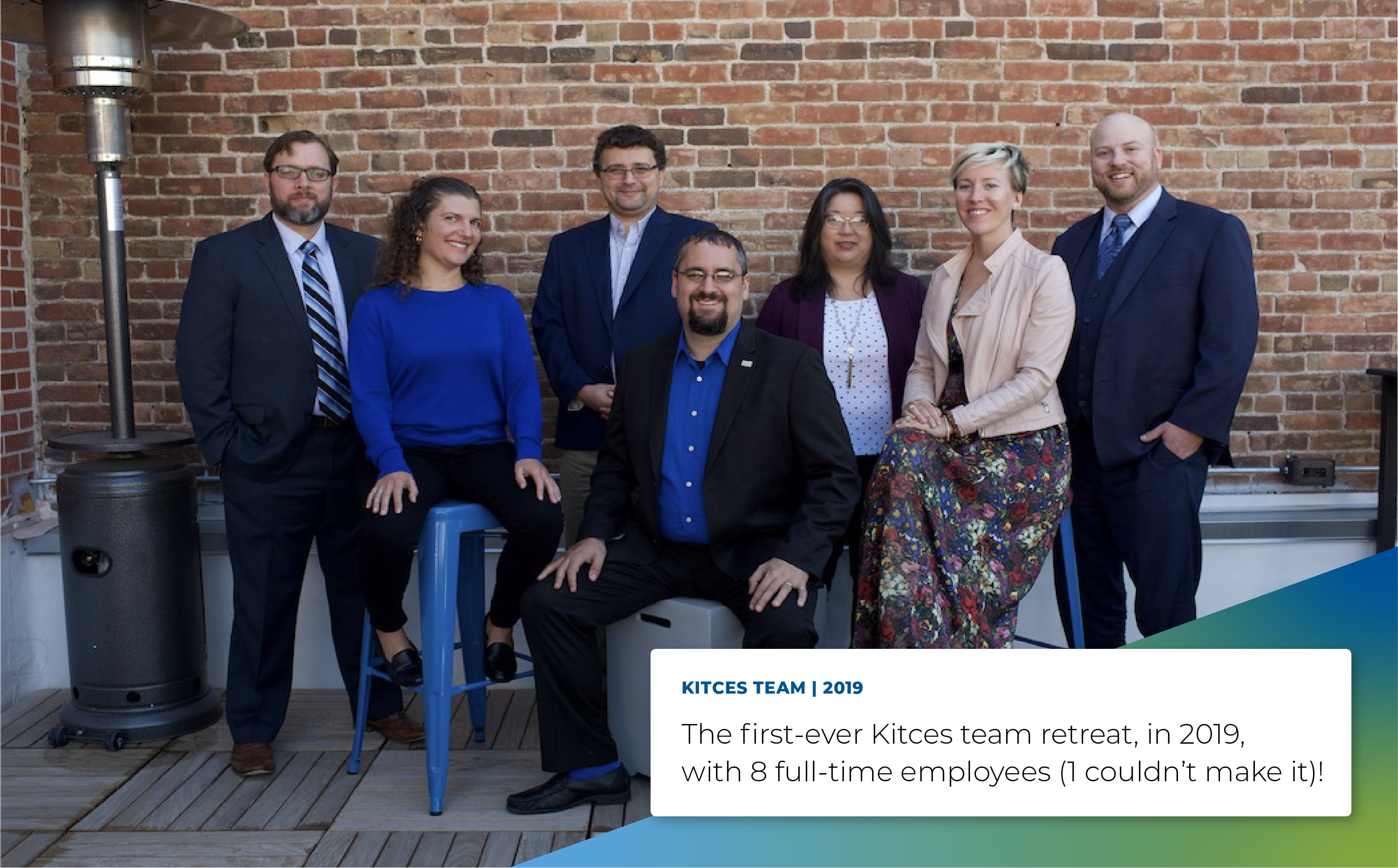
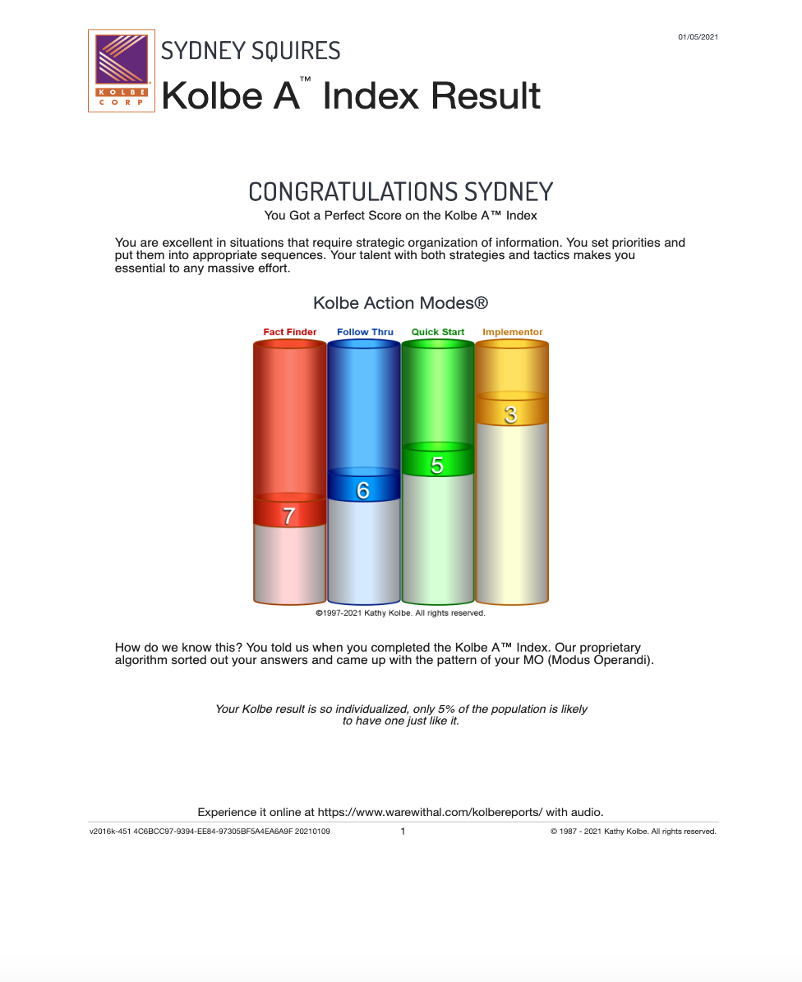
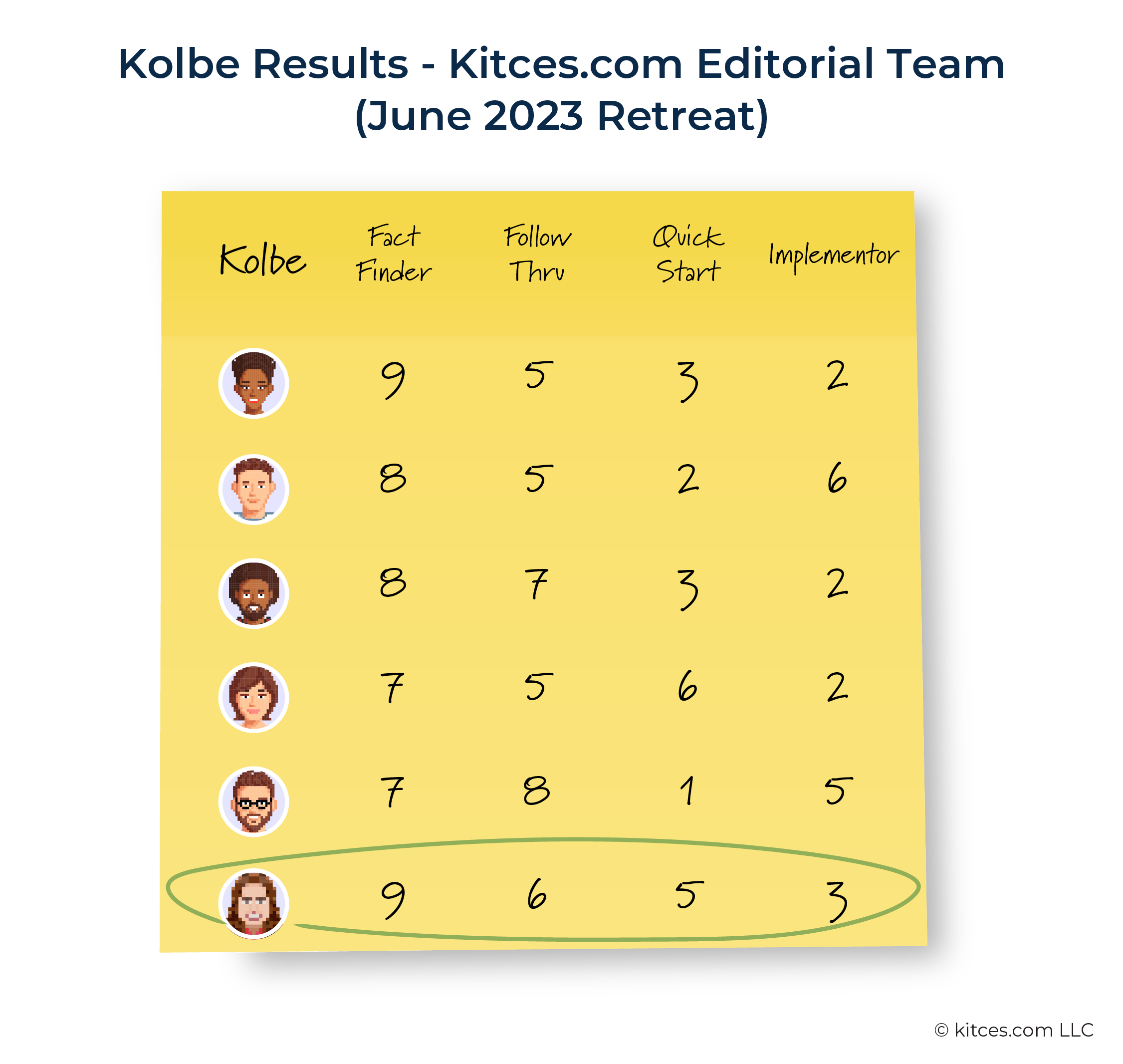
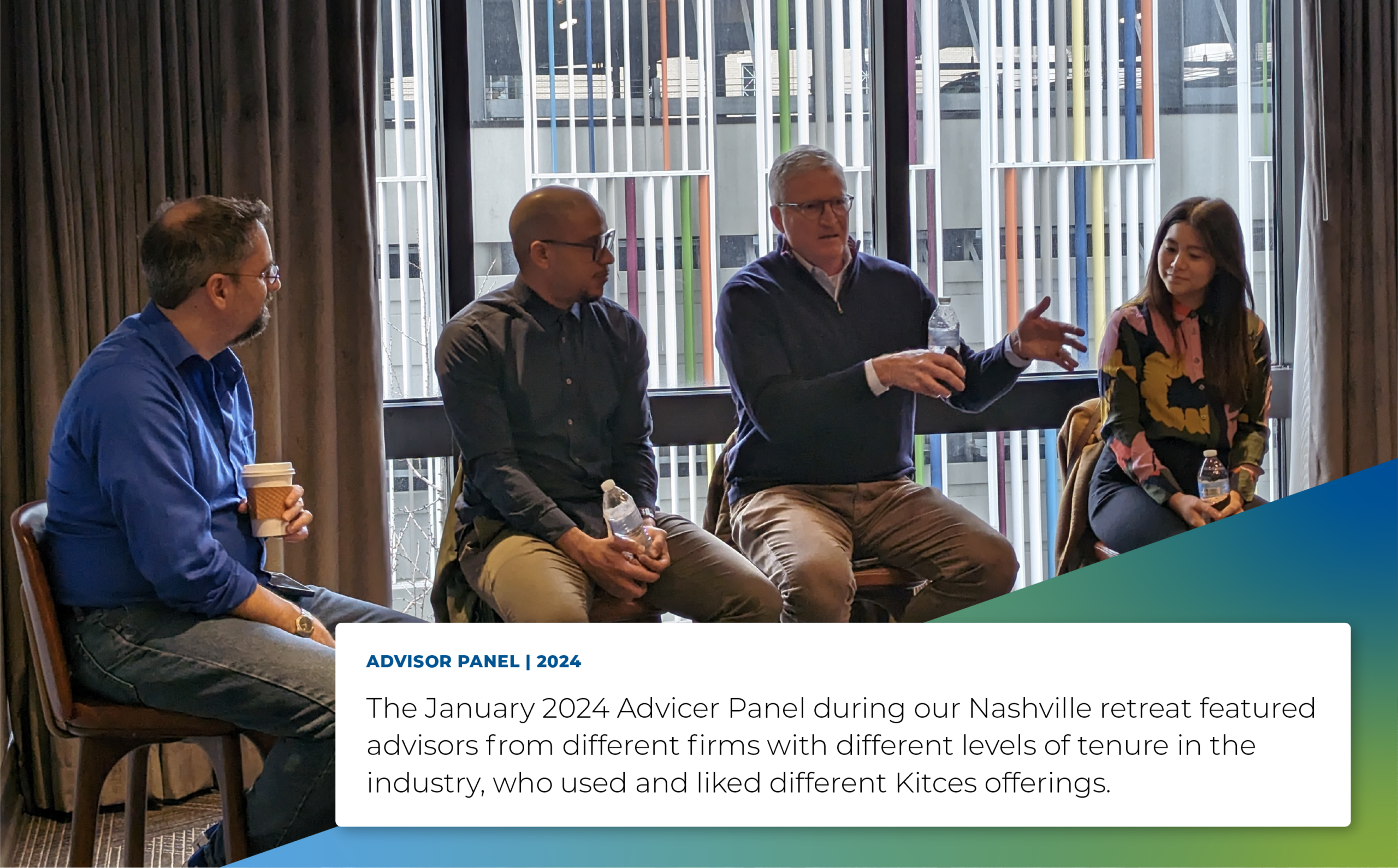
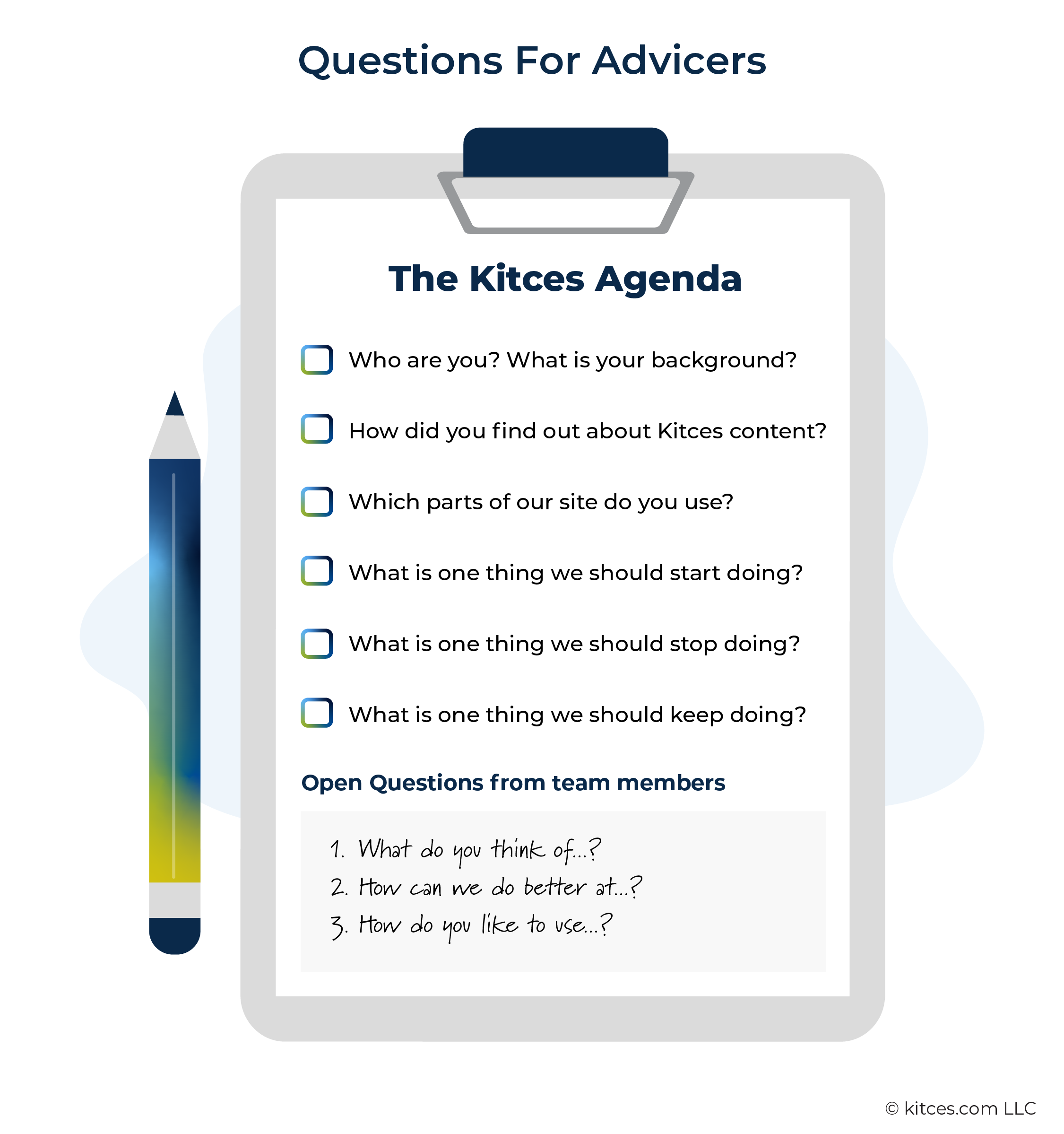
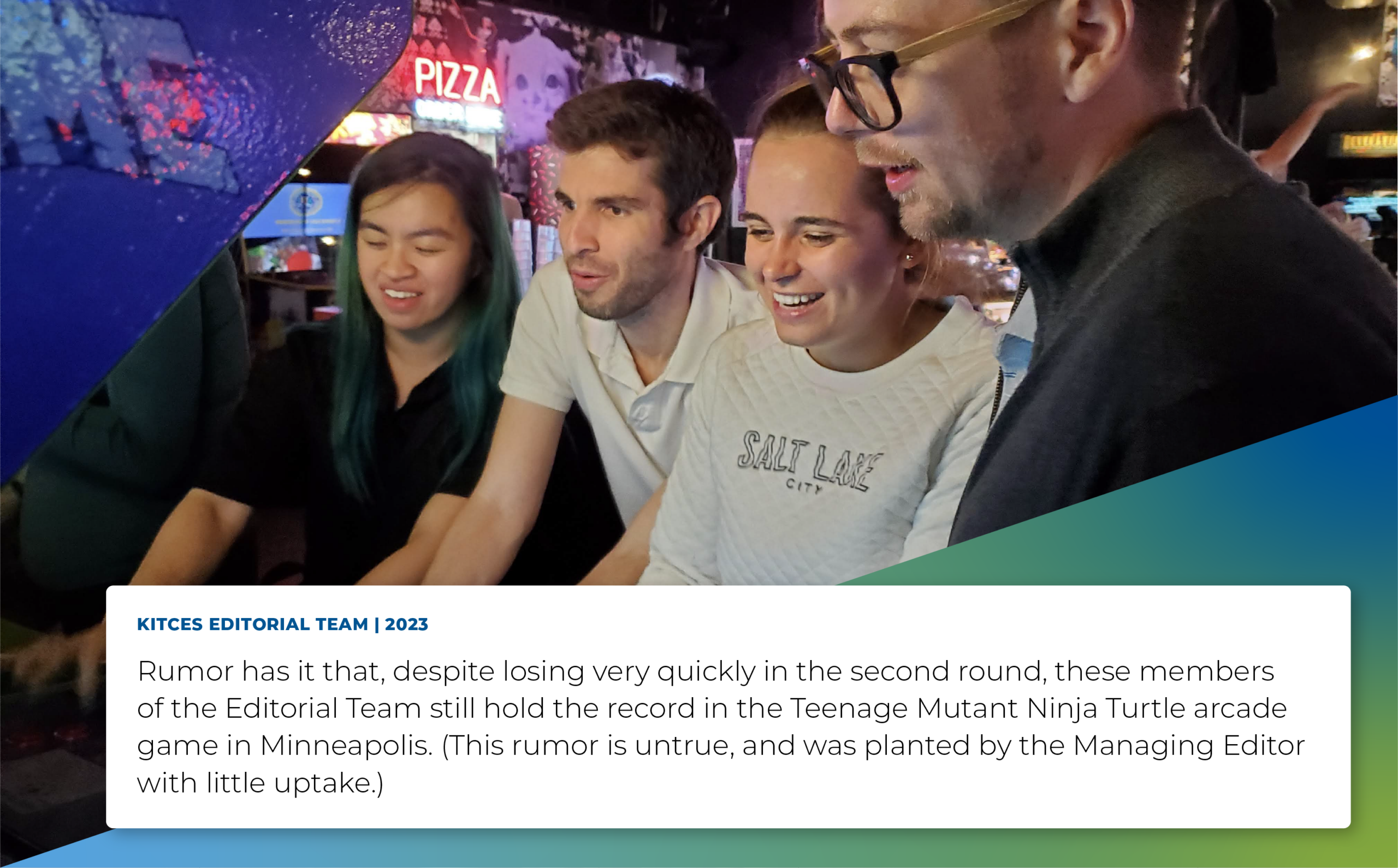
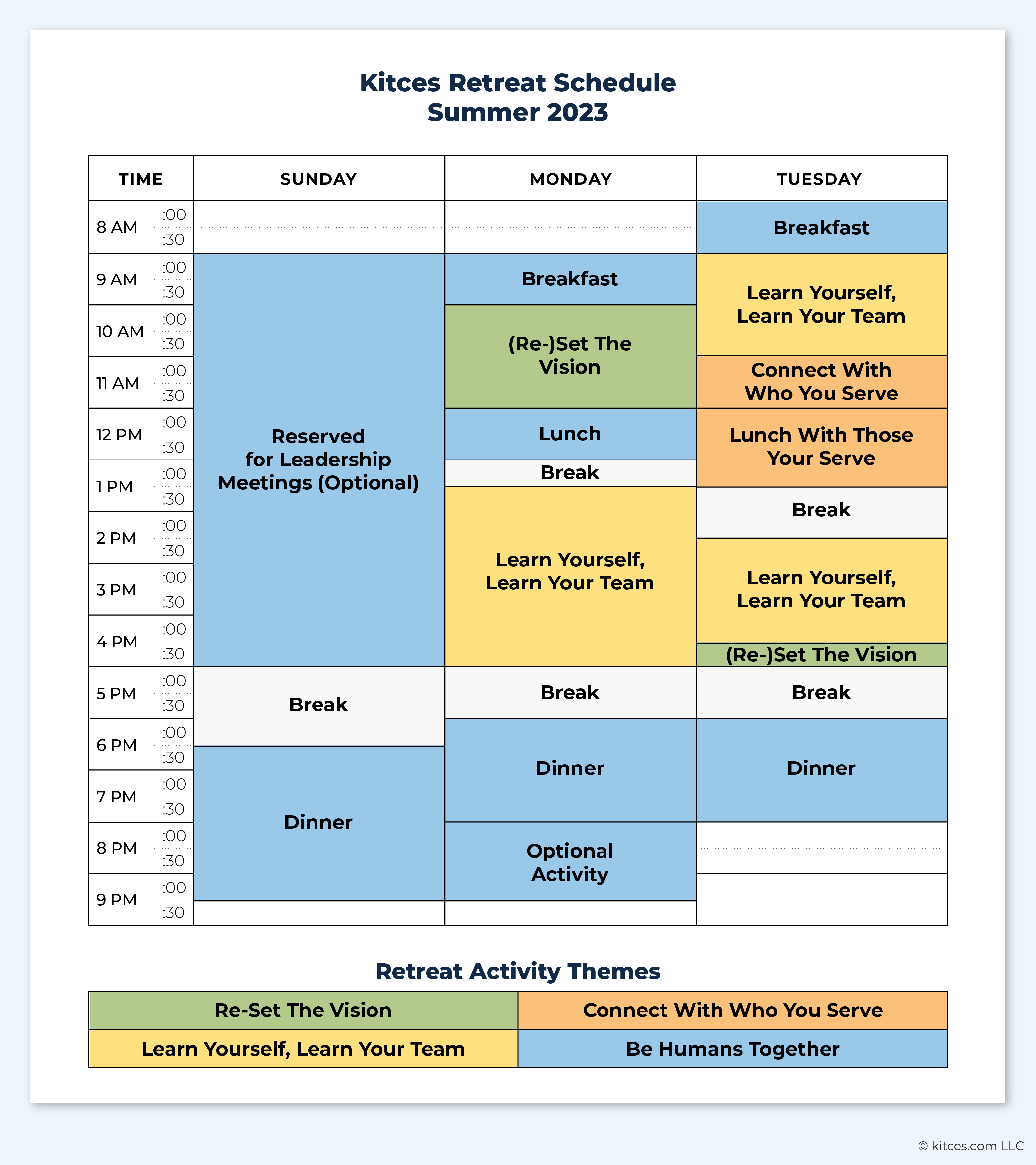
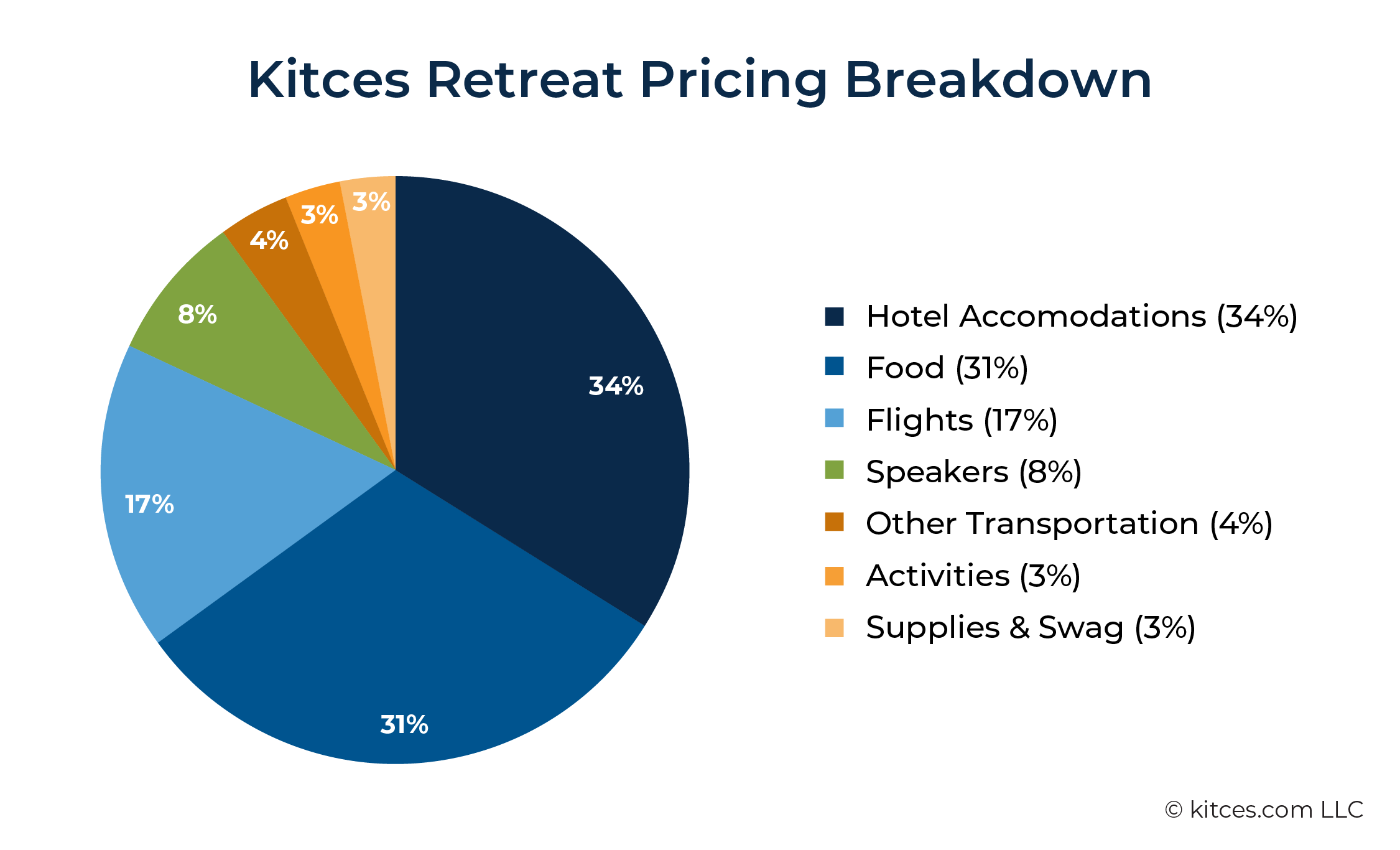
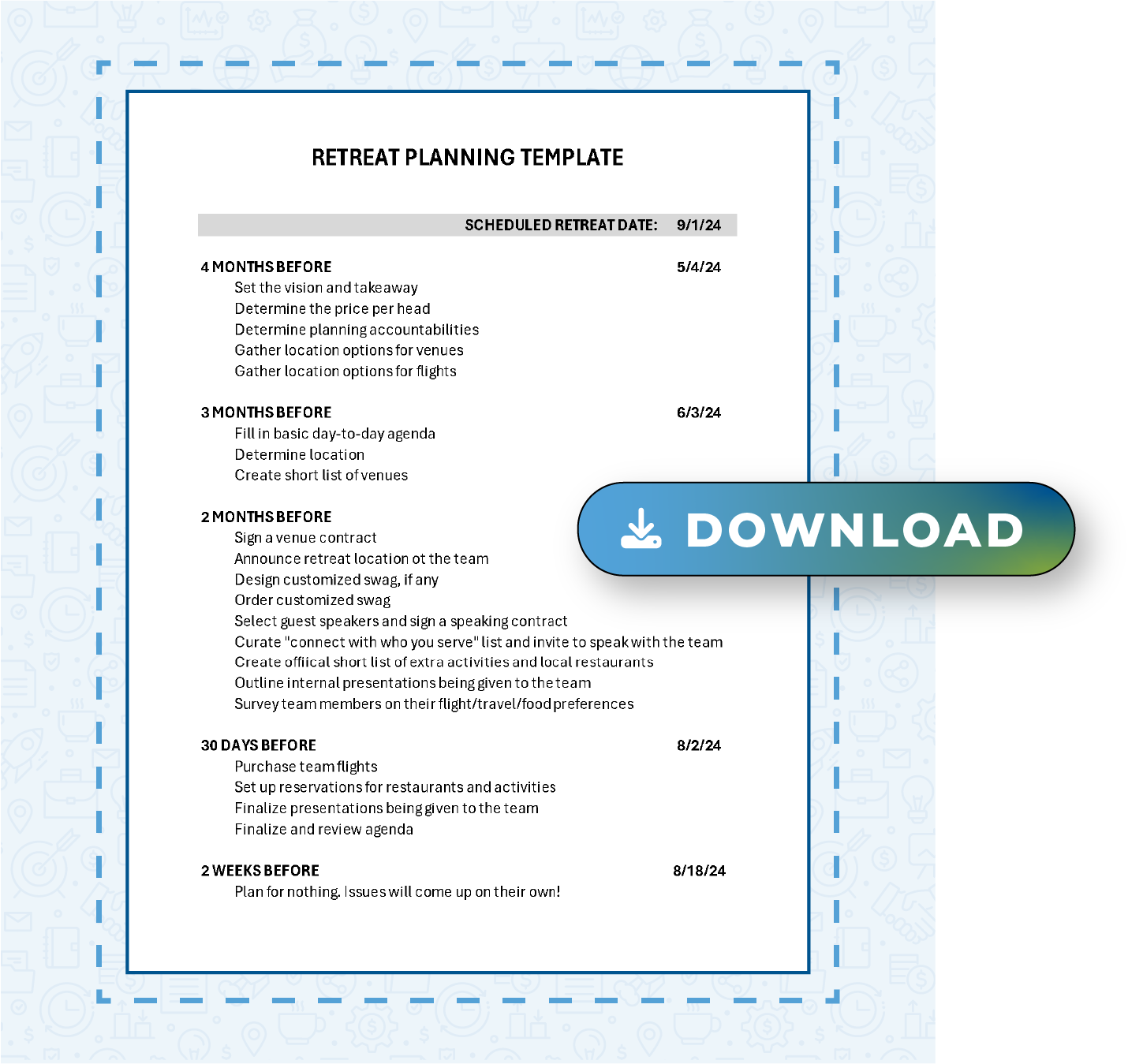
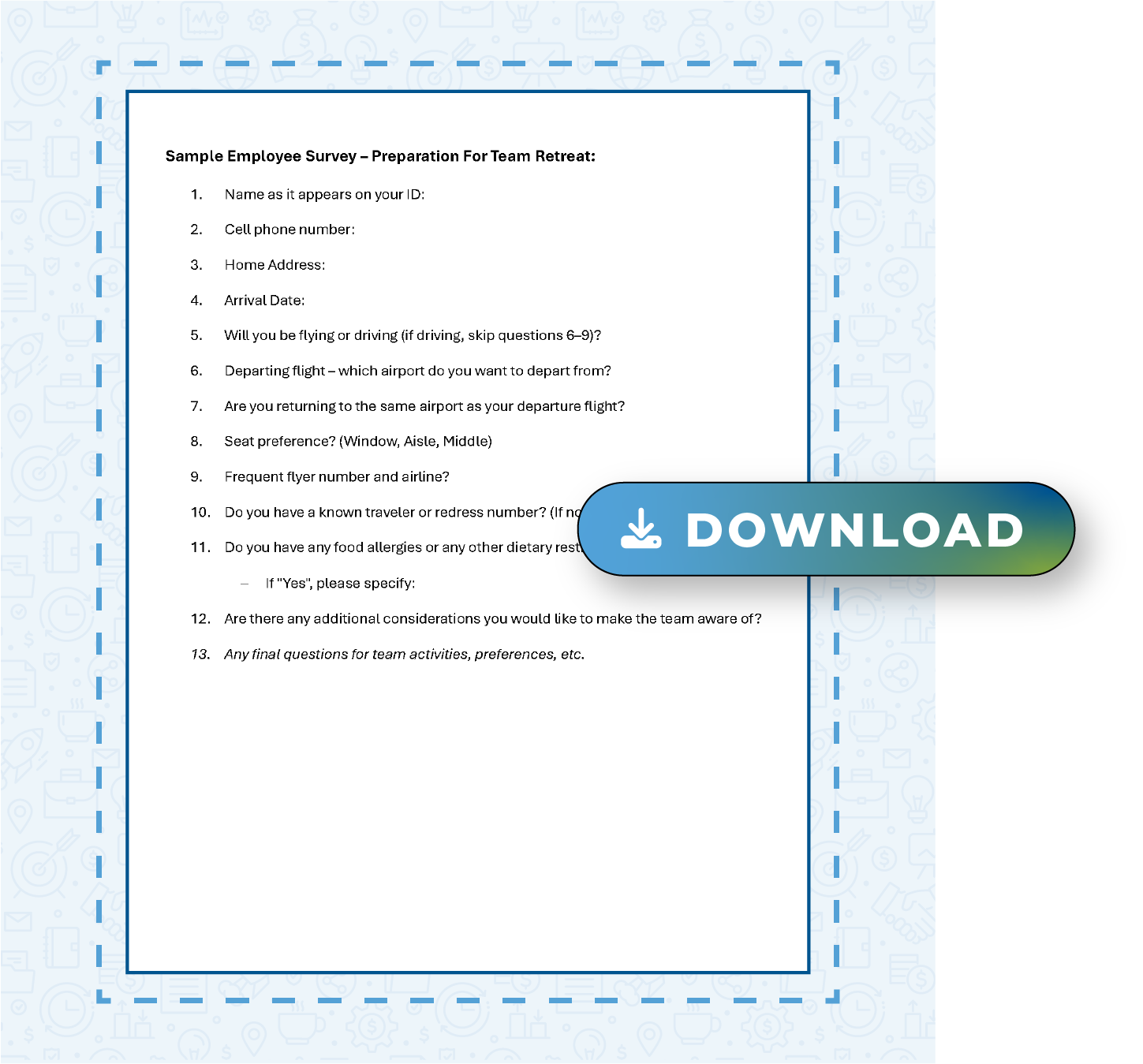
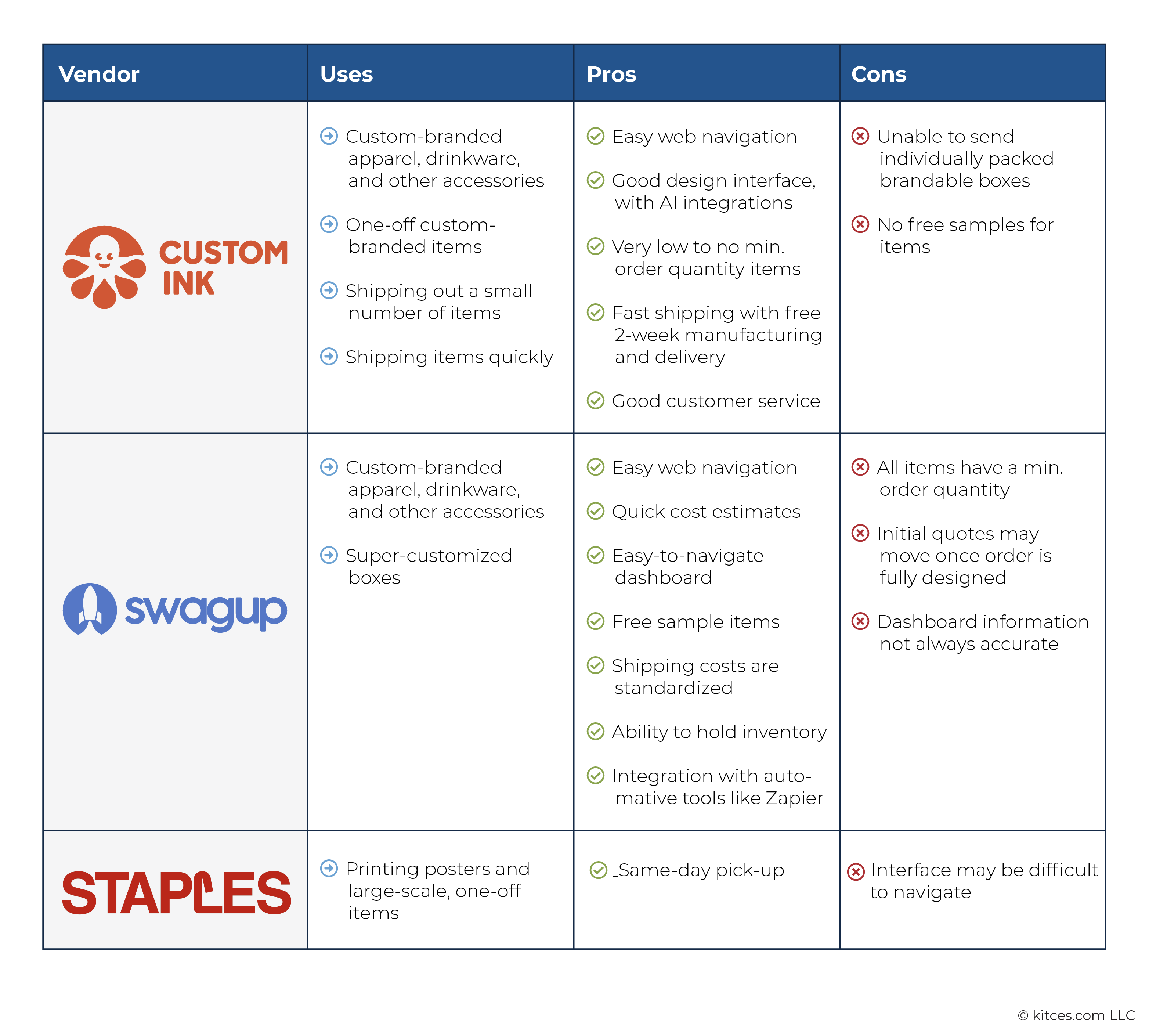
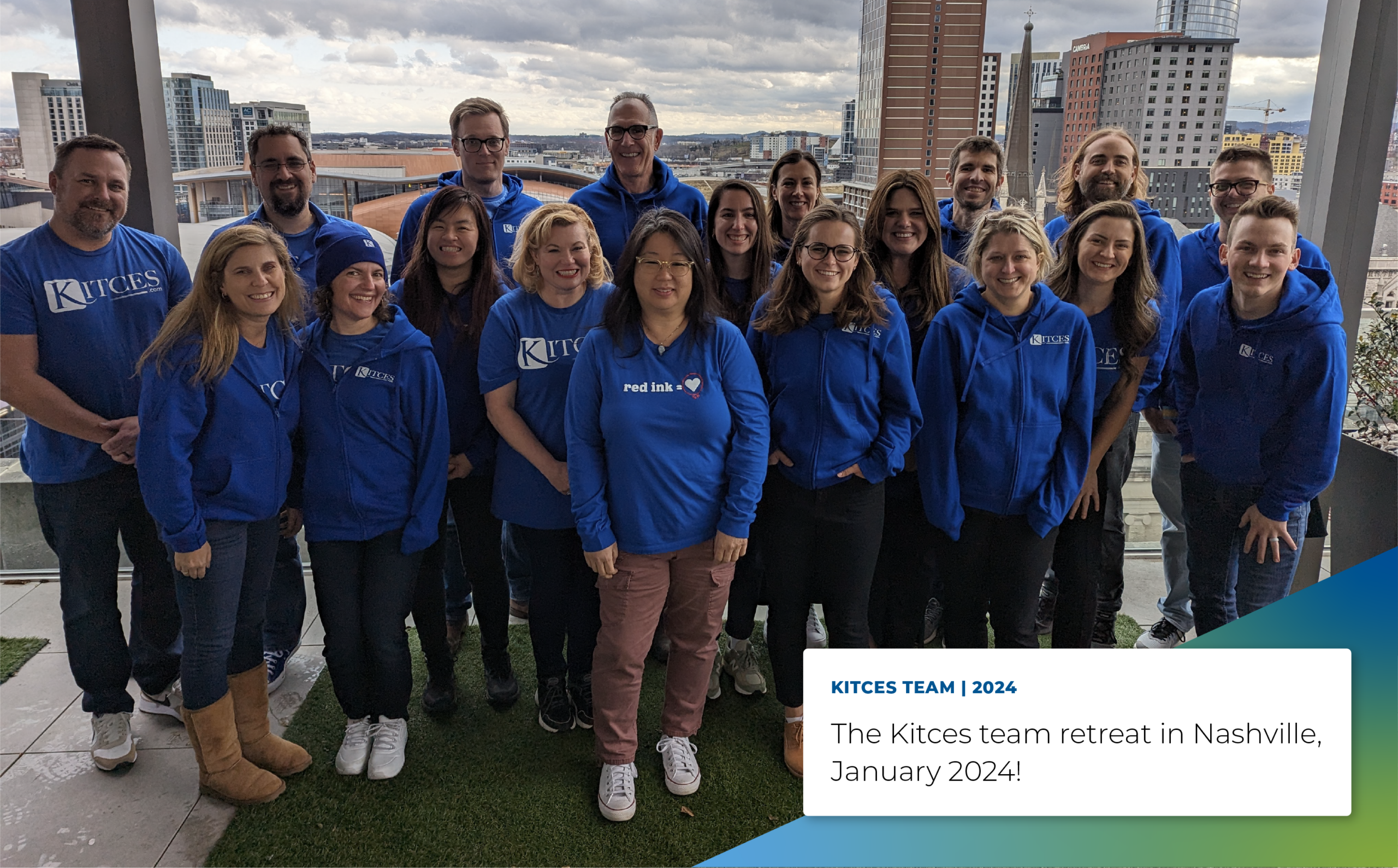



Leave a Reply